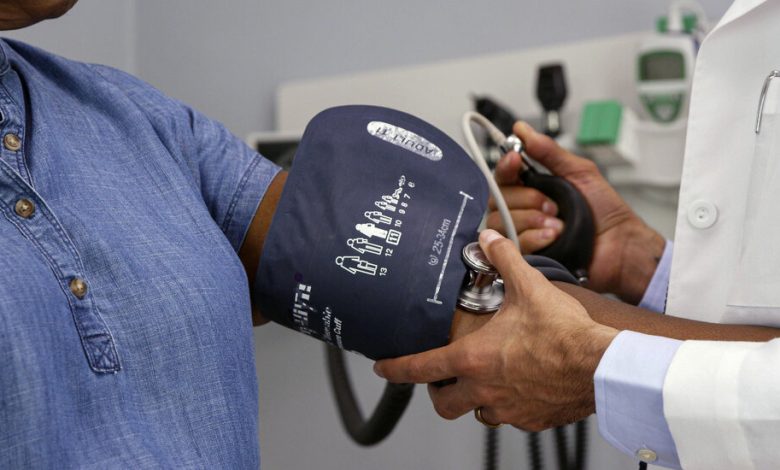Race Cannot Be Used to Predict Heart Disease, Scientists Say

Doctors have long relied on a few key patient characteristics to assess risk of a heart attack or stroke, using a calculus that considers blood pressure, cholesterol, smoking and diabetes status, as well as demographics: age, sex and race.
Now, the American Heart Association is taking race out of the equation.
The overhaul of the widely used cardiac-risk algorithm is an acknowledgment that, unlike sex or age, race identification in and of itself is not a biological risk factor.
The scientists who modified the algorithm decided from the start that race itself did not belong in clinical tools used to guide medical decision making, even though race might serve as a proxy for certain social circumstances, genetic predispositions or environmental exposures that raise the risk of cardiovascular disease.
The revision comes amid rising concern about health equity and racial bias within the U.S. health care system, and is part of a broader trend toward removing race from a variety of clinical algorithms.
“We should not be using race to inform whether someone gets a treatment or doesn’t get a treatment,” said Dr. Sadiya Khan, a preventive cardiologist at Northwestern University Feinberg School of Medicine, who chaired the statement writing committee for the American Heart Association, or A.H.A.
The statement was published on Friday in the association’s journal, Circulation. An online calculator using the new algorithm, called PREVENT, is still in development.
“Race is a social construct,” Dr. Khan said, adding that including race in clinical equations “can cause significant harm by implying that it is a biological predictor.”
That doesn’t mean that Black Americans are not at higher risk of dying of cardiovascular disease than white Americans, she said. They are, and life expectancy of Black Americans is shorter as well, she added.
But race has been used in algorithms as a stand-in for a range of factors that are working against Black Americans, Dr. Khan said. It’s not clear to scientists what all of those risks are. If they were better understood, “we could address them and work to modify them,” she said.
The heart-risk assessment has also been improved in several other significant ways. It can be used by people as young as 30, unlike the earlier algorithm, which was only valid for those 40 and over, and estimates the 10-year and 30-year total cardiovascular risk.
The assessment has been redesigned, for the first time, to estimate an individual’s risk of developing heart failure, not just heart attack and stroke. That is important because heart failure has been on the rise in recent years with the aging of the population and the high prevalence of obesity. The condition can lead to a severe deterioration in quality of life.
Also for the first time, the new calculator takes kidney function into account when predicting risk, as kidney disease puts people at higher risk of heart disease, heart attacks, heart failure and stroke.
In recent years, there has been growing recognition of the strong connection between cardiovascular disease, kidney disease and metabolic disease (which includes Type 2 diabetes and obesity). Last month, scientific advisers to the association defined a new disorder called cardiovascular-kidney-metabolic syndrome, or C.K.M.
“C.K.M. is associated with significantly premature mortality, mostly from cardiovascular disease,” said Dr. Chiadi Ndumele, a cardiologist at Johns Hopkins Medicine who was also an author of the new scientific statement.
“It is disproportionately present when there are any adverse social determinants of health,” he said, which include “the social context in which we eat, work, learn and play.”
The new equation also has options for including a measure of blood sugar control, called hemoglobin A1C, in people with Type 2 diabetes, and for incorporating a factor called the Social Deprivation Index, which includes poverty, unemployment, education and other factors.
The changes are “great news,” said Dr. David S. Jones, a psychiatrist and professor of the history of medicine at Harvard, who wrote a paper about the use of race in myriad medical decision-making algorithms that was published in the New England Journal of Medicine in 2020.
The paper described how race has been used in a broad array of clinical algorithms relied upon to make medical judgments about conditions as diverse as urinary tract infections, vaginal birth after cesarean sections, breast cancer, lung function and kidney function.
“It’s been hugely gratifying to see how medical thinking has shifted about this issue over the past three to five years,” Dr. Jones said.
While there are racial gaps on many health measures, scientists must conduct research to understand exactly what is causing the differences, he said, adding, “You can’t just divide the world into Black and white people, and say that all the white people get this and all the Black people get that.”
Putting the changes into effect can be difficult, however, he said.
Two years ago, a scientific task force of the National Kidney Foundation and American Society of Nephrology called for jettisoning a measure of kidney function that adjusted results by race, often making Black patients seem less ill than they are and leading to delays in treatment.
Within 18 months, about 65 percent of all lab facilities had adopted the new approach, said Dr. Neil Powe, chief of medicine at Zuckerberg San Francisco General Hospital and a professor of medicine at University of California, San Francisco.
Dr. Powe said he shared a concern that was raised by the authors of the A.H.A. scientific statement: What exactly lies at the root of racial health disparities?
“I have said many times that we need to do more research to understand what race is capturing and what the substitute for it is,” Dr. Powe said.
Many physicians do not know whether or to what degree their patients are experiencing social stressors that affect their health. Research on maternal deaths, for example, has shown that wealth and higher education do not compensate for the ill health effects associated with being Black in America.
Although the wealthiest mothers and their babies are most likely to survive the year after childbirth, a California study found that the same was not true for Black women — the wealthiest Black mothers and their babies are twice as likely to die, compared with the richest white mothers and their babies.




